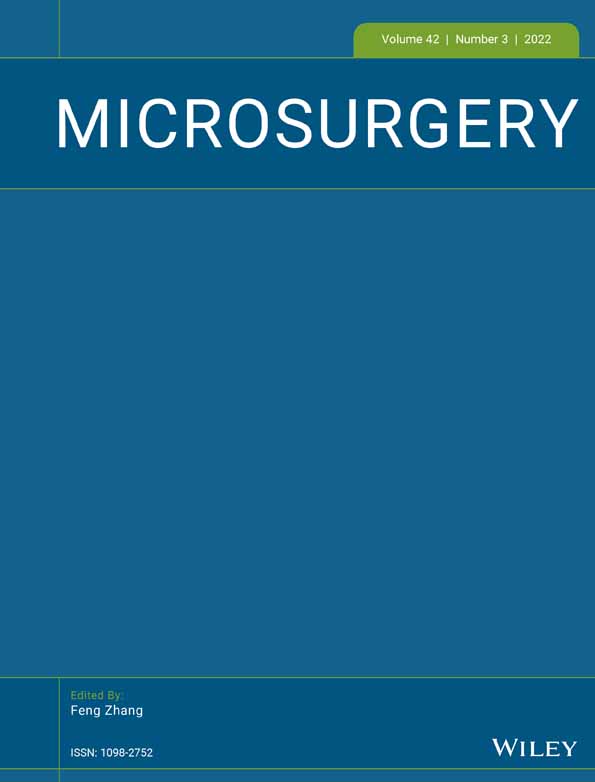Supercharged massetric-facial cross-graft for gracilis reinnervation in unilateral facial palsy treatment
Funding information: This study did not receive any financial support.
Abstract
Background
The choice of neurotization source for gracilis neuromuscular transplant is a key point in the treatment of unilateral long-standing paralysis. To combine the advantages of different donor nerves and overcome their disadvantages, mixed neurotization sources have been described with encouraging results. The authors present a preliminary report of a novel technique, the “supercharged” cross-graft, a two-step technique consisting of a double powered cross nerve graft provided by a zygomatic branch of the healthy facial nerve and the masseter nerve of the healthy side.
Patients and methods
From January 2015 to December 2019 eight patients, aged between 19 and 61 years old (mean age at surgery 33.62) suffering unilateral established paralysis (congenital or acquired, >24 months) underwent gracilis reinnervation with the supercharged cross grafting technique. Subjects underwent a two-step surgical rehabilitation: in the first operation sural nerve was harvested and used as cross-graft cooptated by healthy side facial nerve branch and masseteric nerve. During second procedure gracilis neuromuscular transplant was performed reinnervarting the muscle with the cross-graft. Patients were evaluated using Emotrics software, which allowed for automated facial measurements on post-operative pictures taken at the last follow-up. The results of the different poses were compared to assess the contribution to smile excursion by the masseter and facial nerve, together and separately. Finally, we analyzed spontaneous smile to assess whether masseteric contribution is used in daily life.
Results
No major or minor complications occurred. Follow-up time ranged from 12 to 41 months, with a mean of 22.75 months. A good commissure excursion (mean 33.84 mm) was obtained during smile with no teeth clenching (without masseter activation), as well as during teeth clenching without smiling (activation of gracilis only – mean 32.55). When smiling and biting simultaneously the excursion was greater than the single two components (mean 35.91). In spontaneous smile, commissure excursion was higher (mean 34.23) than that provided by only the facial nerve (smile only) in most patients.
Conclusions
This novel technique of mixed neurotization for gracilis transplant shows consistent results with powerful contraction and good smile coordination. It also allows us to extend the indications for mixed neurotization techniques.
CONFLICT OF INTEREST
The authors have no financial conflict of interest to disclose.
Open Research
DATA AVAILABILITY STATEMENT
The data that support the findings of this study are available on request from the corresponding author. The data are not publicly available due to privacy or ethical restrictions.




